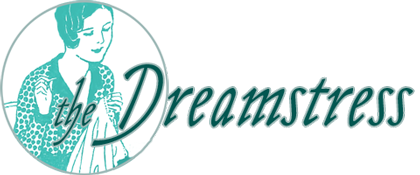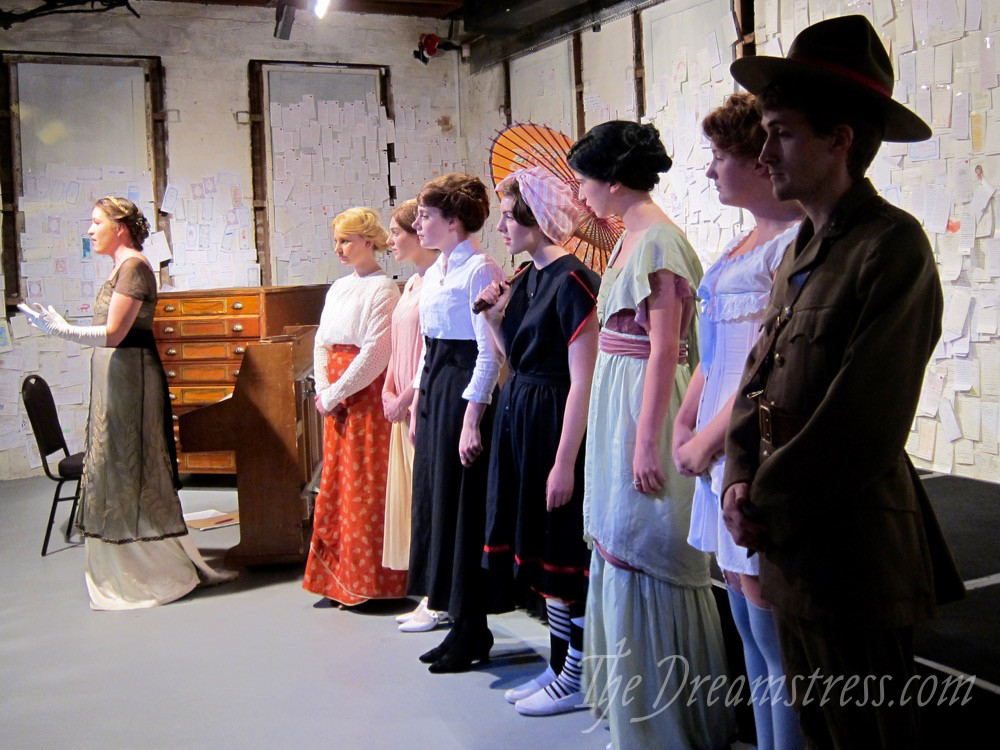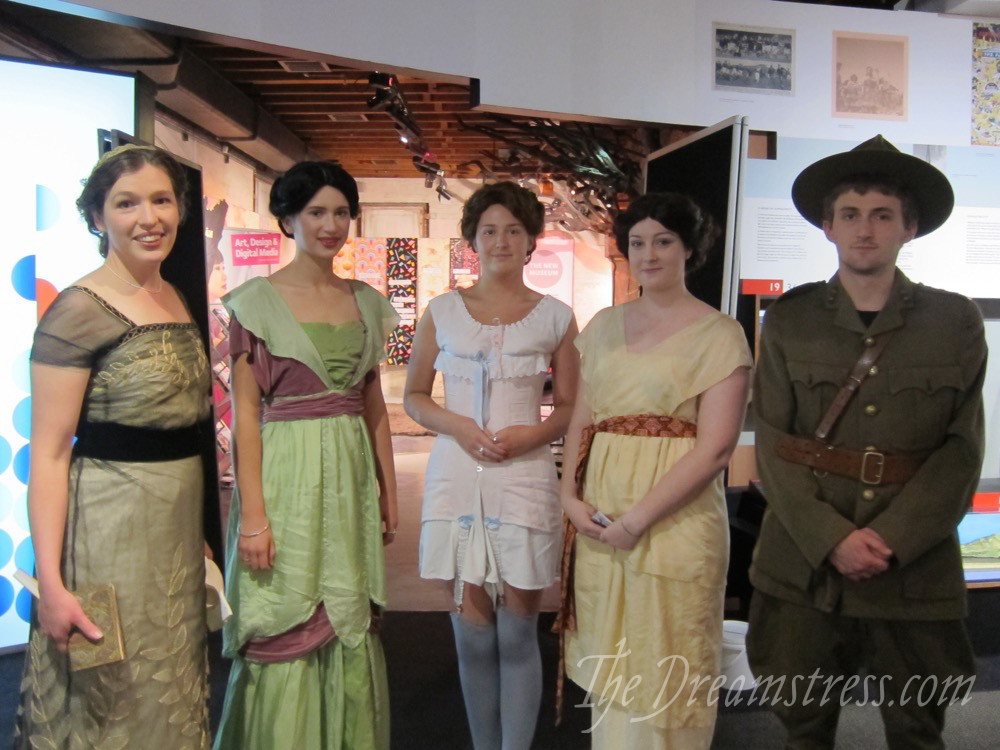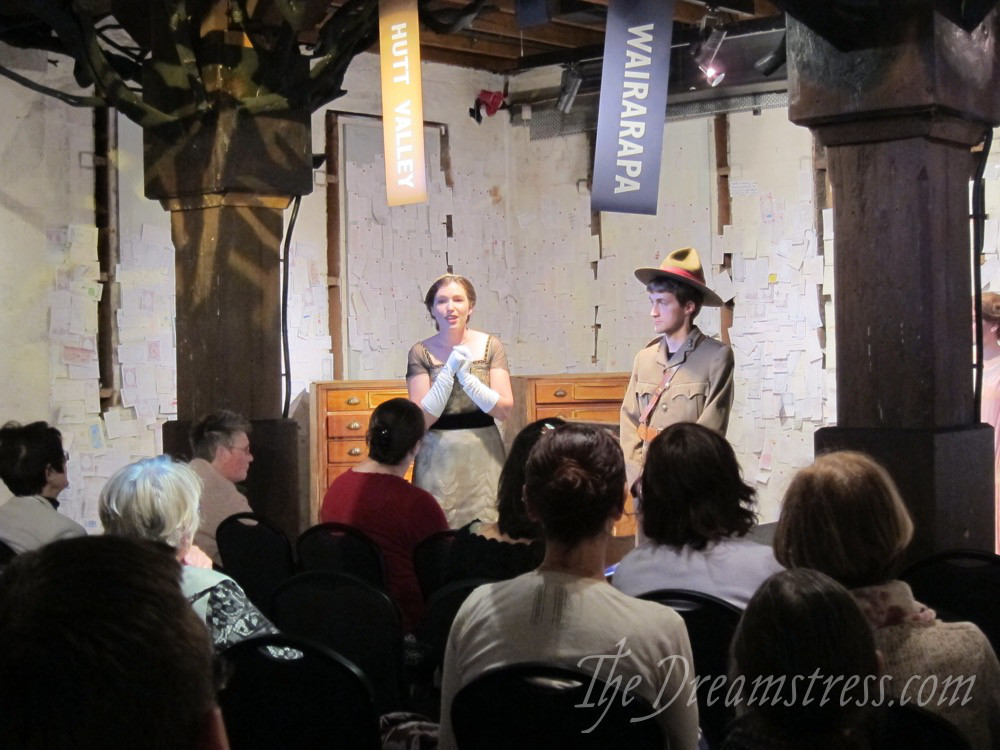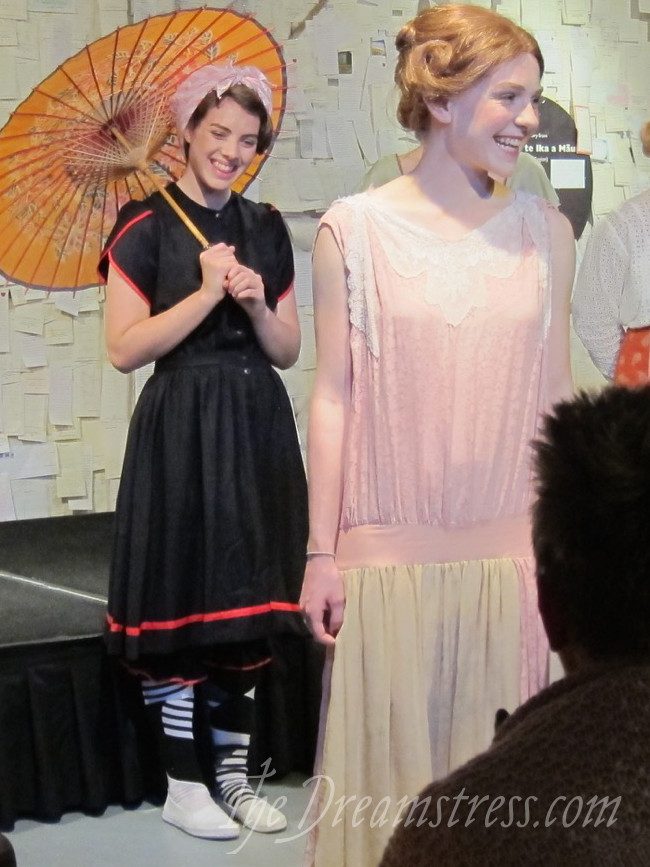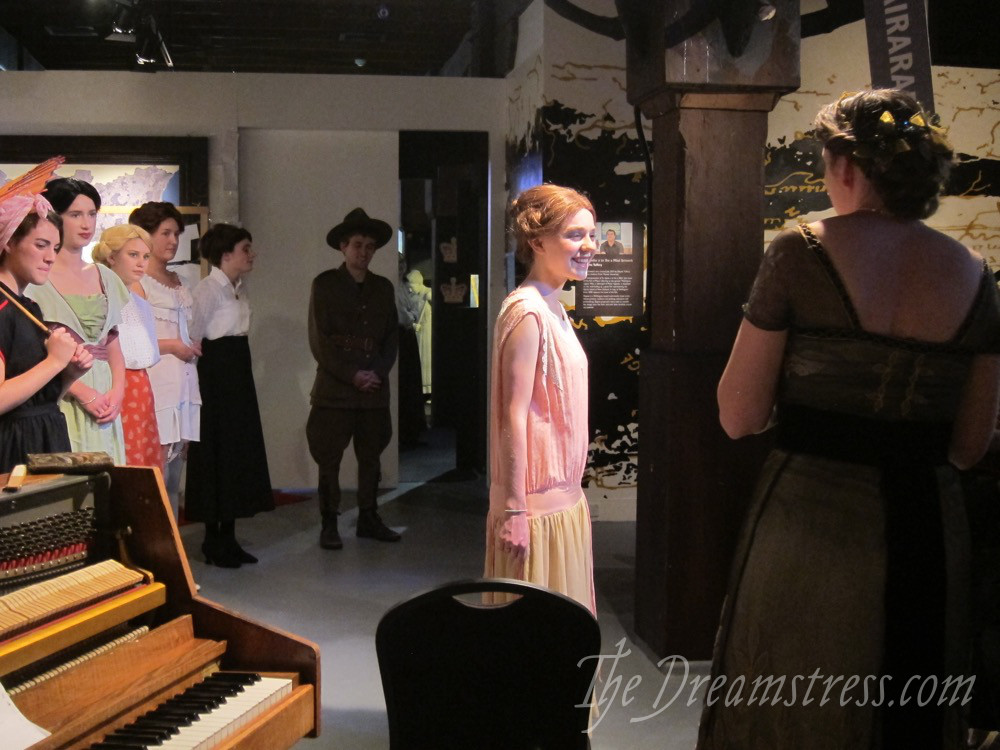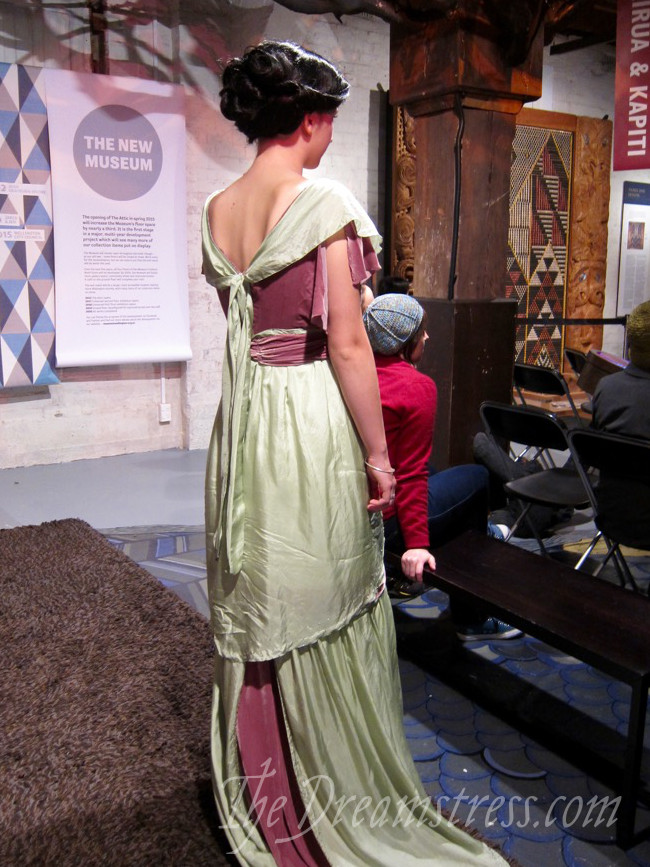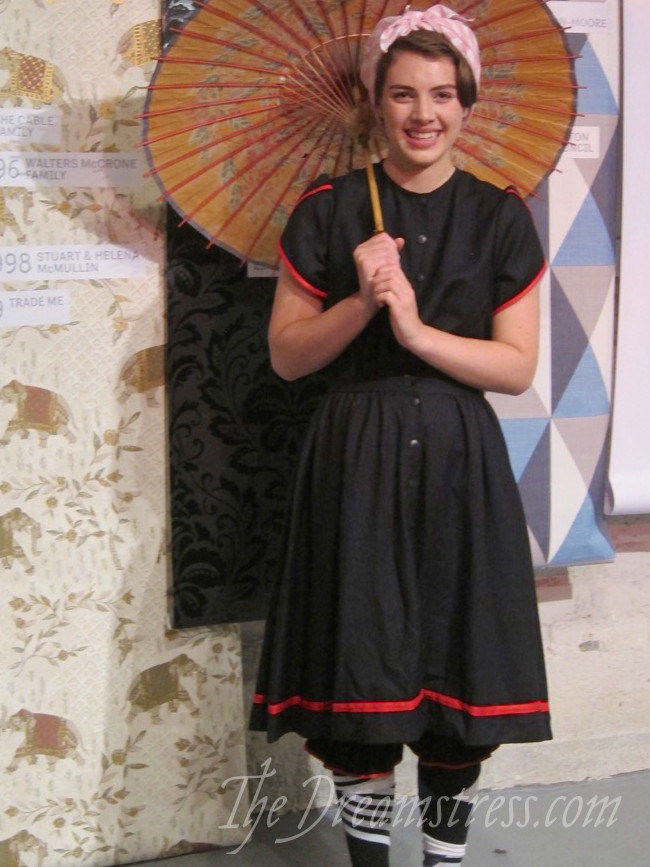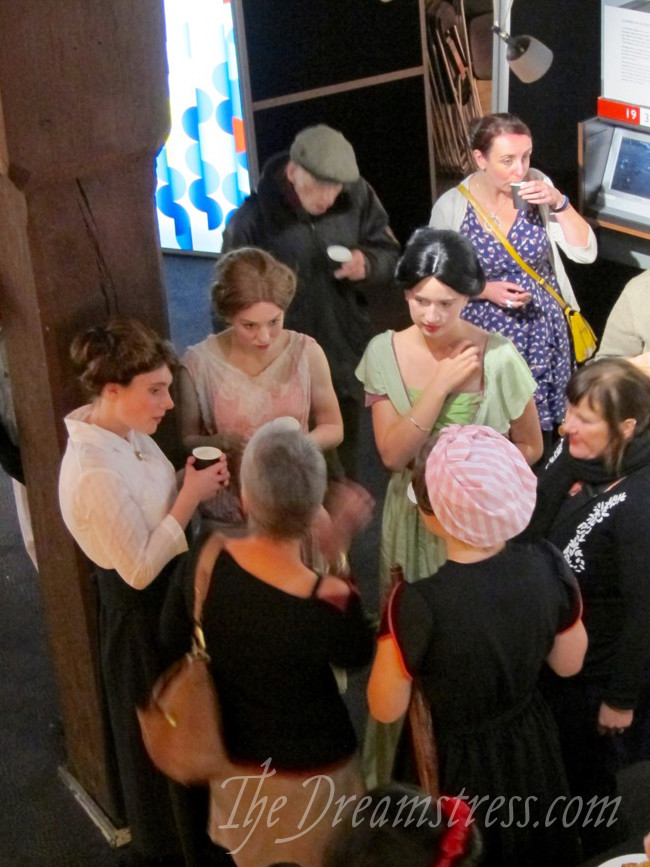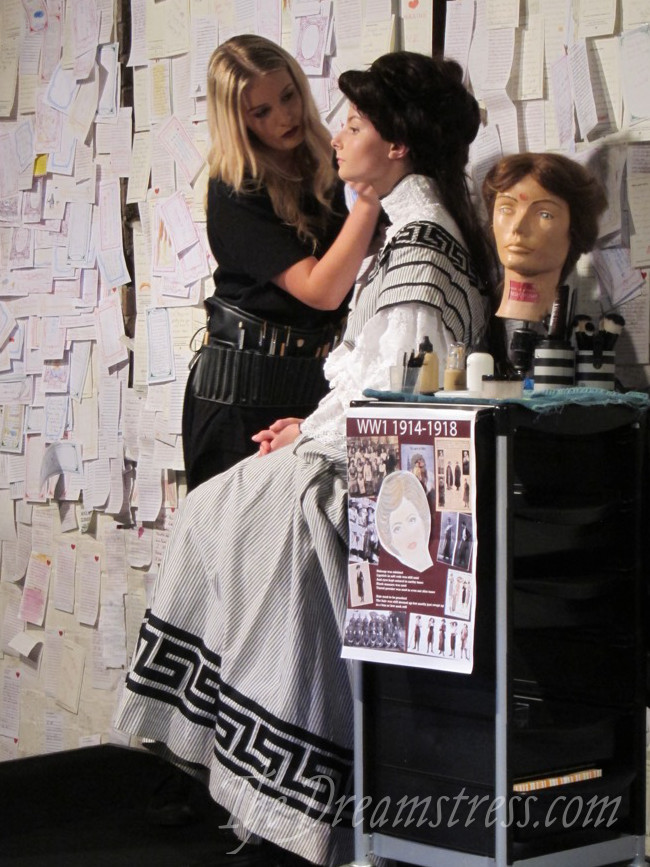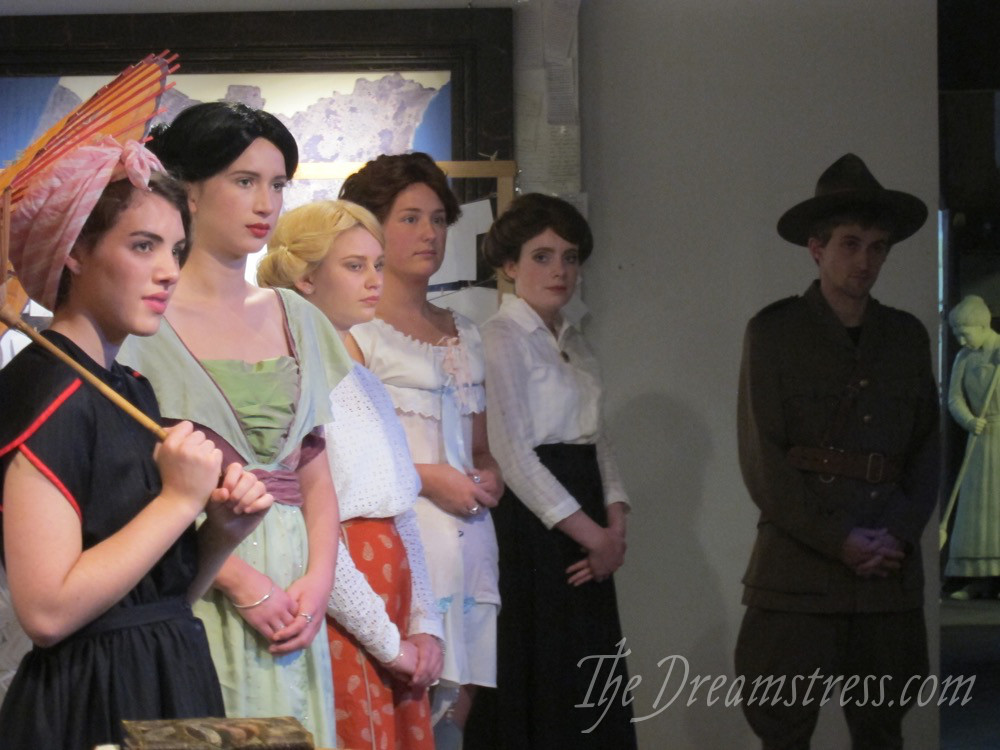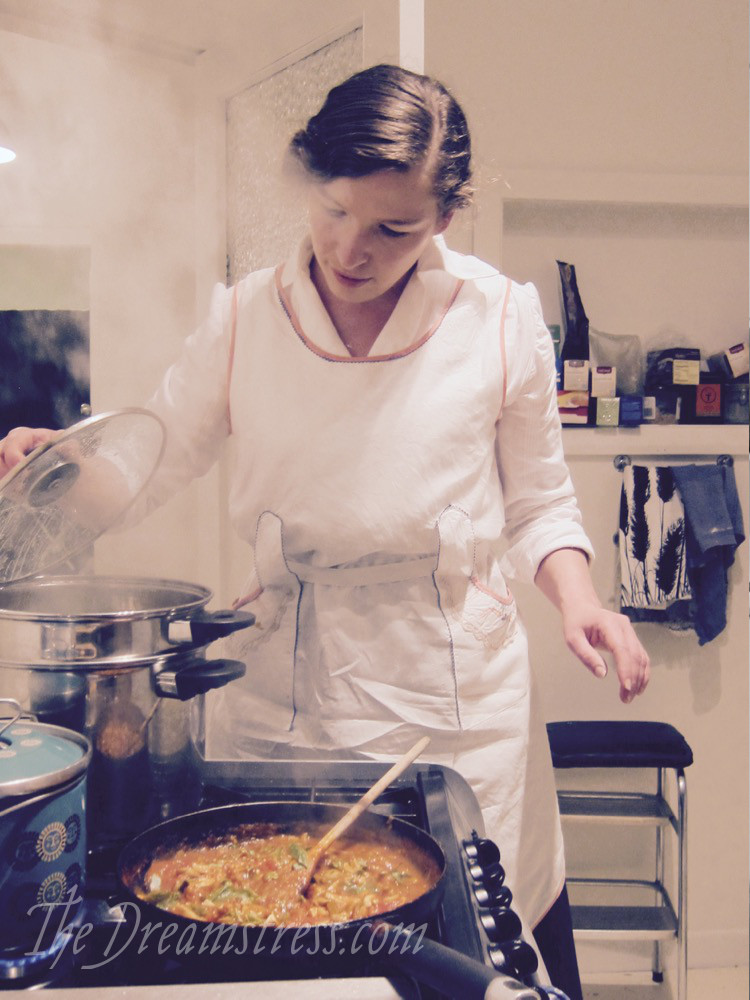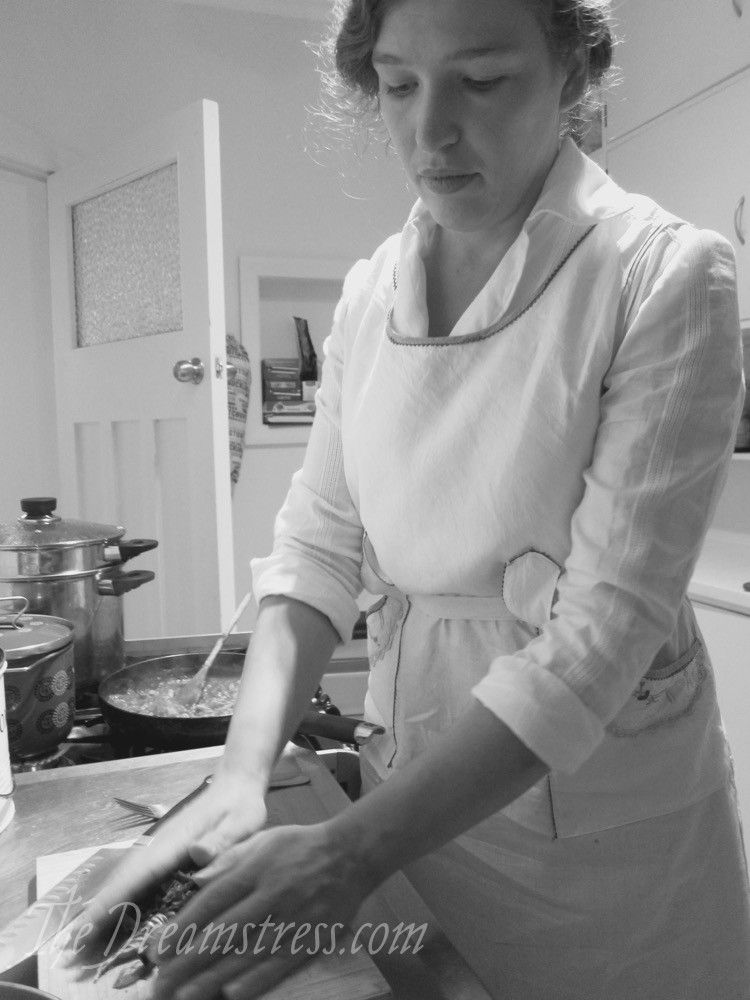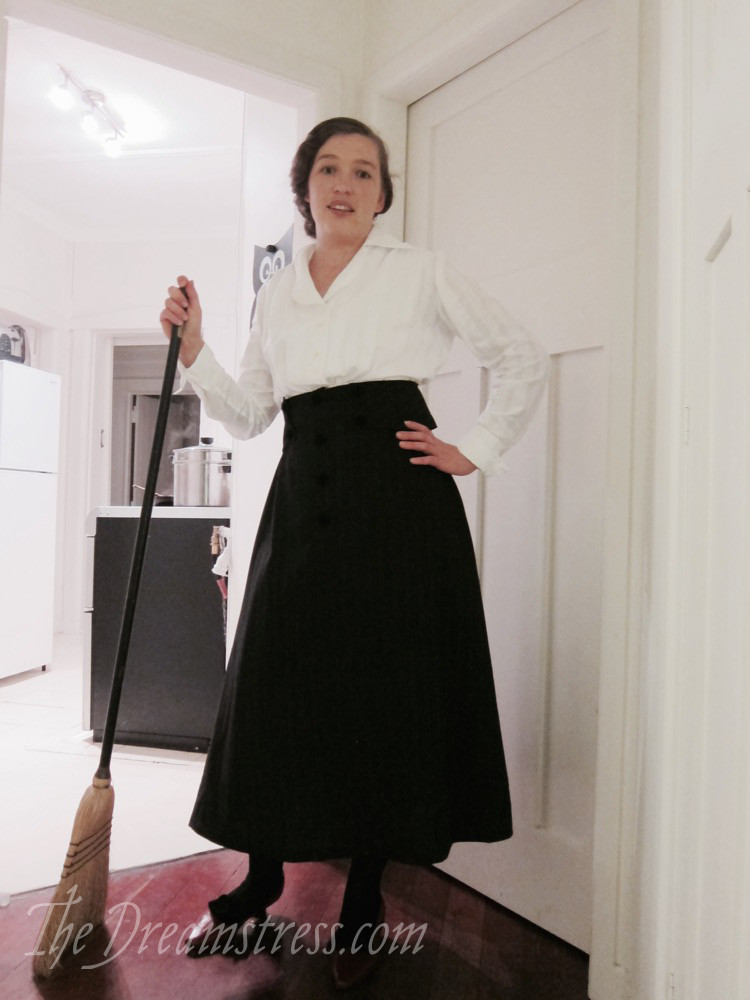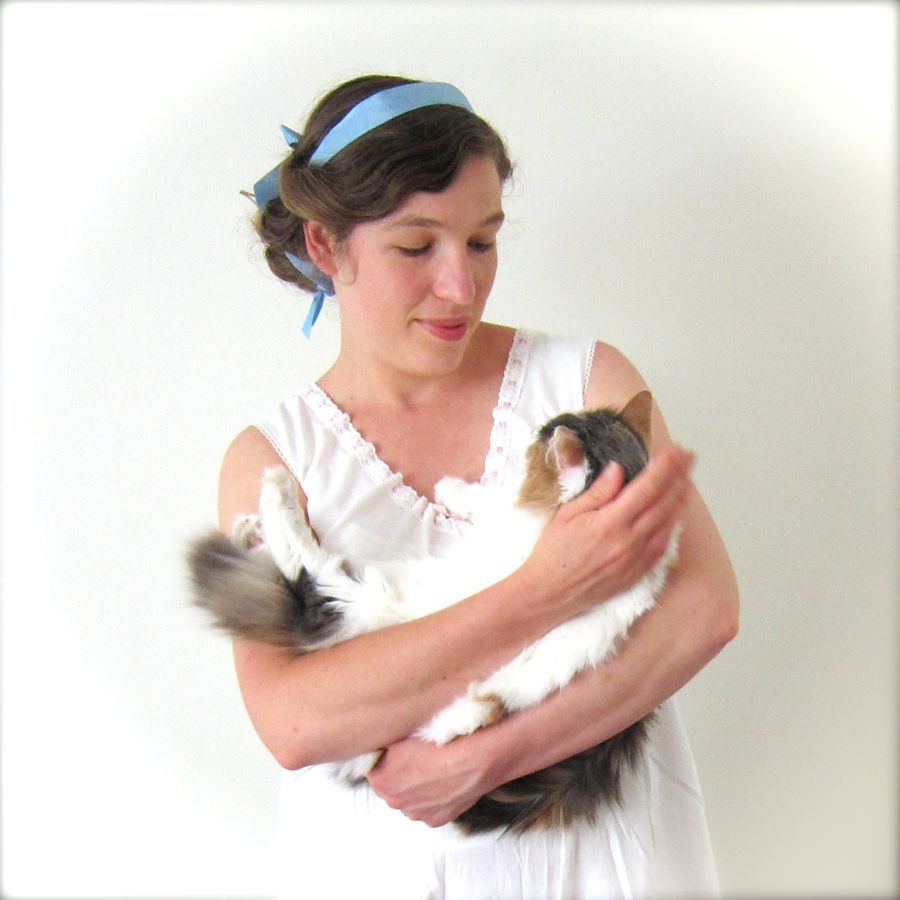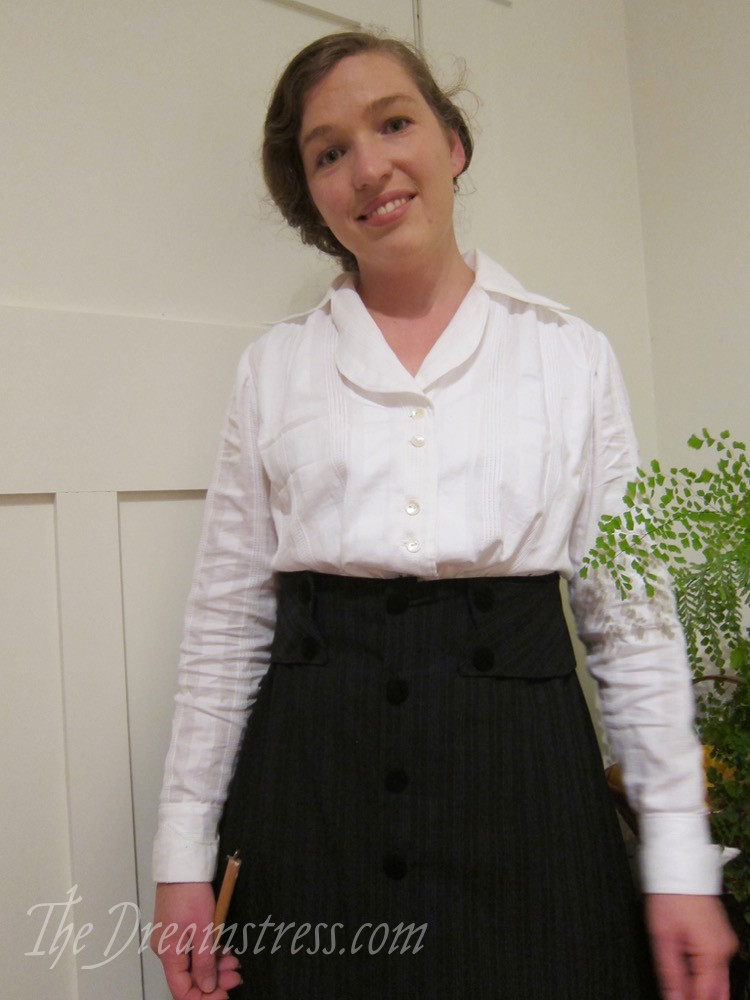Photos! Pretty, pretty photos from my talk at the Museum of Wellington City & Sea!
And lots of them! (well, of course. This is me we’re talking about!)
And then, down at the bottom, some unexpectedly serious musing. (well, of course. This is me we’re talking about!)
The talk covered the immediate before-the-war fashions, and the effect of WWI on fashions during and after the war.
Usually I use my own models, but this time MWCS arranged all the models – a group of gorgeous girls (and by gorgeous I mean ‘interesting and lovely people’ not ‘look like a magazine model’) from a local college (that’s a high school in the US) or WelTec (a college in the American sense) and museum staff and friends for the men. I missed my usual models because they are so fabulous, but really enjoyed getting to work with a new group, because they were also fabulous.
Before the talk, with models, and the amazing Sarah who arranged the whole event in my Poiret dress:
Because we had male models as well as female, I was able to cover the importance of being in uniform to men at the time, and the societal contexts that made NZ men so willing and eager to participate in the war.
The uniform isn’t my work – it’s a rented piece.
We also had a lovely rented 1920s dress, which I used to demonstrate the actual type of 1920s frock that most girls in New Zealand wore in the early-mid ’20s.
It also gave me an excuse to discuss the difference between the flapper archetype as it is imagined today, the flapper archetype as it existed in the US in the 1920s, and the word flapper as it was used in New Zealand in the ’20s, where it mainly referred to schoolgirls trying things out (so most of the references refer to ‘flappers with their plaited pigtails bouncing’ or ‘a flapper with her hair pinned up for the first time’ – which isn’t how we think of flappers today at all!). The model was quite amused to be a ‘flapper’ in her demure pink dress, and it was lovely that she was the right age too.
One of the real triumphs of the night for me was the Luna Moth dress. I’ve never been in love with the gown. In fact, most of the time I don’t even like it. But on the model of the night? It was spectacular! We only got a few photos of her in it, but she looked phenomenal.
(I promise that that was steamed and pressed to absolute perfection when she left the dressing room – some silks just crumple the minute you breath on them!)
The other triumph of the night was my 1907 swimsuit. The model was particularly charismatic, and I made a new pair of dazzle stockings to go with the swimsuit, a la the fashion plate in this post.
I’m even happier with this pair than the first – they are more period accurate, and the pattern flows better. Now I just need to make a shorter 1910s swimsuit to wear with them… (it never ends!)
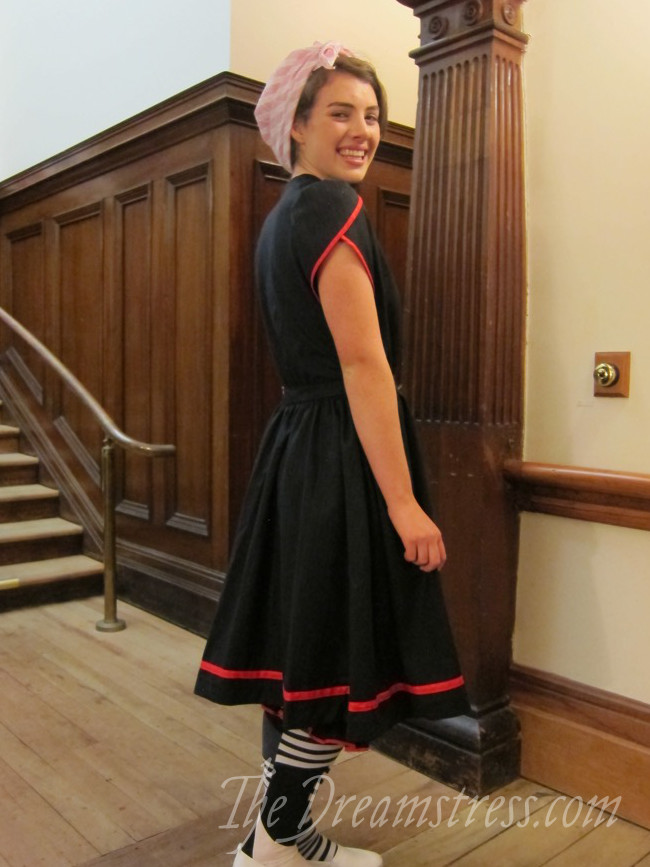 After the talk there were drinks and snacks and mingling:
After the talk there were drinks and snacks and mingling:
And then a demonstration of period hair and makeup by WelTec.
The hair and makeup demonstrations were focused on hair and makeup as you would do it for movies or stage today, extrapolating the beauty ideals of each period to create a look. Very few women, particularly in New Zealand, would have been wearing much, if any, makeup in period. There was lots of fascinating historical information given with the talk about hair and makeup and the ideals of each period.
It was quite different for me to have all the models with professional makeup jobs, and fully styled wigs. Usually when I do talks the models wear absolute minimal makeup, because that’s period for most periods. If I were to do, say, full 18th century makeup, I would want it to be very historical, and at the moment I don’t have the time and resources for that.
Sometimes I’m lucky enough to have Claire of The Vanity Case or Maryanne or someone else with a good grounding in period hair to do hairstyles for my models, otherwise I demonstrate to the models beforehand what we are aiming for, and we do our best on the day.
So it was different and unusual to have everyone so made up and glamorous, and while they looked stunning, they almost looked too perfect. They were so uniformly polished and coiffed that it showed that they were all made up and styled to the same design.
A single, perfectly executed, stylised theme is a conceit that works beautifully onstage or onscreen, because it helps to create the world of the story, and to add to the interaction between characters, and the suspension of disbelief. Think of Coppola’s Marie Antoinette as the perfect example.
I don’t think such uniform perfection worked quite as well for the reality I try to show in period dress. I want everyone to look beautiful, but also like they had dressed and styled themselves – as if you had walked into a room in the period, and, just like a party today, every woman would have her own way of presenting herself. All styled, they looked like bridesmaids or beauty pageant models (in a really nice way – the ones you’d pin on pinterest as a daydream of achieving that!).
So they were absolutely stunning, but in the end I’m happy that I won’t usually be able to have my models looking quite so perfect.
All in all, a very successful and fascinating evening, and lots of wonderful new experiences for me. Many thanks to the Wellington Museum’s Trust for having me!
